 W
WFeathers are epidermal growths that form distinctive outer covering, or plumage, on dinosaurs, both avian and some non-avian, and possibly other archosauromorphs. They are considered the most complex integumentary structures found in vertebrates and a premier example of a complex evolutionary novelty. They are among the characteristics that distinguish the extant birds from other living groups.
 W
WThe term aigrette refers to the tufted crest or head-plumes of the egret, used for adorning a headdress. The word may also identify any similar ornament, in gems.
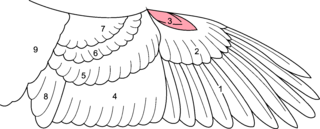 W
WThe alula, or bastard wing, is a small projection on the anterior edge of the wing of modern birds and a few non-avian dinosaurs. The word is Latin and means "winglet"; it is the diminutive of ala, meaning "wing". The alula is the freely moving first digit, a bird's "thumb", and typically bears three to five small flight feathers, with the exact number depending on the species. There also are minor covert feathers overlying the flight feathers. Like the larger flight feathers found on the wing's trailing edge, these alula feathers are asymmetrical, with the shaft running closer to anterior edge.
 W
WAvifilopluma is a clade containing all animals with feathers. Unlike most clades, which are defined based on relative relationships, Avifilopluma is defined based on an apomorphy, that is, a unique physical characteristic shared by one group and not found outside that group. It includes all coelurosaurs, some orionoides, and one or two basal tetanurans.
 W
WFeather bowling or Featherbowling, also known as Trabollen in Belgium, is a game played with wooden balls shaped in a similar way to cheese wheels. It closely resembles the sport of curling, a Scottish sport.
 W
WThe conservation and restoration of feathers is the practice of maintaining and preserving feathers or featherwork objects, and requires knowledge of feather anatomy, properties, specialized care procedures, and environmental influences. This practice may be approached through preventive and/or interventive techniques.
 W
WA covert feather or tectrix on a bird is one of a set of feathers, called coverts, which, as the name implies, cover other feathers. The coverts help to smooth airflow over the wings and tail.
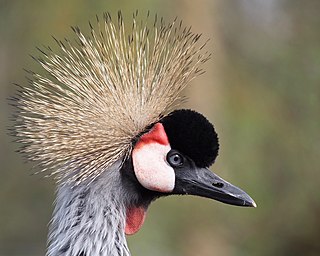 W
WThe crest is a prominent feature exhibited by several bird and other dinosaur species on their heads. It is distinct from features such as casques and cockcombs - sometimes erroneously referred to as "crests", which are bony and fleshy structures respectively.
 W
WDelayed-feathering in chickens is a genetically determined delay in the first weeks of feather growing, which occurs normally among the chicks of many chicken breeds and no longer manifests itself once the chicken completes adult plumage.
 W
WThe down of birds is a layer of fine feathers found under the tougher exterior feathers. Very young altricial birds are clad only in down. Powder down is a specialized type of down found only in a few groups of birds. Down is a fine thermal insulator and padding, used in goods such as jackets, bedding (duvets), pillows and sleeping bags. The discovery of feathers trapped in ancient amber suggests that some species of dinosaur may have possessed down-like feathers.
 W
WThe eagle feather law provides many exceptions to federal wildlife laws regarding eagles and other migratory birds to enable Native Americans to continue their traditional spiritual and cultural practices.
 W
WEar tufts are skin projections covered in feathers found in some bird species, most notably various species of owl, vaguely resembling mammalian ears, but unrelated to the animal's hearing. Their function remains uncertain.
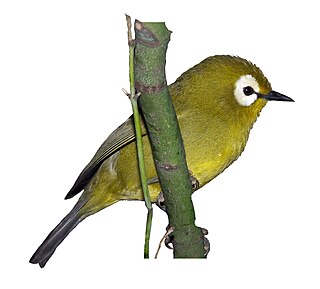 W
WThe eye-ring of a bird is a ring of tiny feathers that surrounds the orbital ring, a ring of bare skin immediately surrounding a bird's eye. The eye-ring is often decorative, and its colour may contrast with adjoining plumage. The ring of feathers is sometimes incomplete, forming an eye arc. In the absence of a conspicuous eye-ring, the orbital ring of a bird is often referred to as the eye-ring. The bare orbital ring may be hardened or fleshy, or may form an eye-wattle. These are useful field marks in many bird species, and the eye-ringed flatbill, eye-ringed tody-tyrant and eye-ringed thistletail are examples of species named for either of these.
 W
WA feather boa is a fashion accessory that is usually worn wrapped around the neck like a scarf.
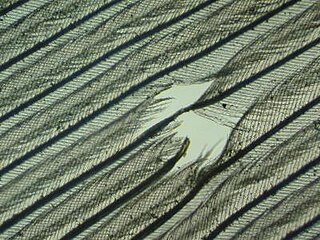 W
WFeather holes often characteristically occur on wing and tail feathers of some small-bodied species of passerines. In the case of barn swallows, it was suggested that the holes were feeding traces of avian lice, either Machaerilaemus malleus and/or Myrsidea rustica.
 W
WFeather pecking is a behavioural problem that occurs most frequently amongst domestic hens reared for egg production, although it does occur in other poultry such as pheasants, turkeys, ducks, broiler chickens and is sometimes seen in farmed ostriches. Feather pecking occurs when one bird repeatedly pecks at the feathers of another. The levels of severity may be recognized as mild and severe. Gentle feather pecking is considered to be a normal investigatory behaviour where the feathers of the recipient are hardly disturbed and therefore does not represent a problem. In severe feather pecking, however, the feathers of the recipient are grasped, pulled at and sometimes removed. This is painful for the receiving bird and can lead to trauma of the skin or bleeding, which in turn can lead to cannibalism and death.
 W
WFeather-plucking, sometimes termed feather-picking, feather damaging behaviour or pterotillomania, is a maladaptive, behavioural disorder commonly seen in captive birds which chew, bite or pluck their own feathers with their beak, resulting in damage to the feathers and occasionally the skin. It is especially common among Psittaciformes, with an estimated 10% of captive parrots exhibiting the disorder. The areas of the body that are mainly pecked or plucked are the more accessible regions such as the neck, chest, flank, inner thigh and ventral wing area. Contour and down feathers are generally identified as the main target, although in some cases, tail and flight feathers are affected. Although feather-plucking shares characteristics with feather pecking commonly seen in commercial poultry, the two behaviours are currently considered to be distinct as in the latter, the birds peck at and pull out the feathers of other individuals.
 W
WFeathers: The Evolution of a Natural Miracle is a natural history book by American conservation biologist Thor Hanson. Published by Basic Books in 2011 and written for general audiences, the book discusses the significance of feathers, their evolution, and their history both in nature and in use by humans.
 W
WFlight feathers are the long, stiff, asymmetrically shaped, but symmetrically paired pennaceous feathers on the wings or tail of a bird; those on the wings are called remiges, singular remex, while those on the tail are called rectrices, singular rectrix. The primary function of the flight feathers is to aid in the generation of both thrust and lift, thereby enabling flight. The flight feathers of some birds have evolved to perform additional functions, generally associated with territorial displays, courtship rituals or feeding methods. In some species, these feathers have developed into long showy plumes used in visual courtship displays, while in others they create a sound during display flights. Tiny serrations on the leading edge of their remiges help owls to fly silently, while the extra-stiff rectrices of woodpeckers help them to brace against tree trunks as they hammer on them. Even flightless birds still retain flight feathers, though sometimes in radically modified forms.
 W
WHackles are the erectile plumage or hair in the neck area of some birds and mammals.
 W
WHen feathering in cocks is the occurrence of a genetically conditioned character in domestic fowl. Males with this condition develop a female-type plumage, although otherwise look and respond as virile males.
 W
WSome terms used for the feathers of poultry are identical to those used for feathers of other birds, while others are specific to poultry. They include:
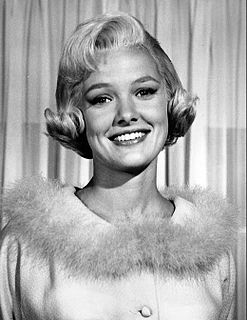 W
WMarabou describes a certain type of down feather trimming. Although it takes its name from the marabou stork whose undertail down once provided the feathers, white turkey feathers have been used as a substitute. The advantage of marabou is that it takes dye well, making it a very versatile trimming for dress, and makes an effective substitute for fur. While marabou has been widely used as a fashion trimming since the late 19th century, it is also often used in fly tying for making up the lures ('flies') used for fly fishing.
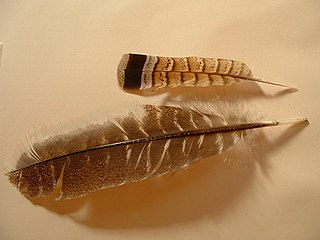 W
WThe pennaceous feather is a type of feather present in most modern birds and in some other species of maniraptoriform dinosaurs.
 W
WA pin feather, sometimes called a "blood feather", is a developing feather on a bird. This feather can grow as a new feather during the bird's infancy, or grow to replace one from moulting.
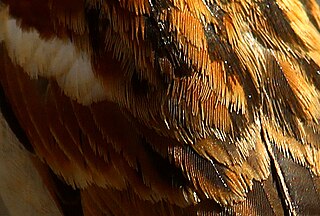 W
WPlumage is a layer of feathers that cover a bird and the pattern, colour, and arrangement of those feathers. The pattern and colours of plumage differ between species and subspecies and may vary with age classes. Within species, there can be different colour morphs. The placement of feathers on a bird is not haphazard, but rather emerge in organized, overlapping rows and groups, and these feather tracts are known by standardized names.
 W
WA plume is a special type of bird feather, possessed by egrets, ostriches, birds of paradise, quetzals, pheasants and peacocks. They often have a decorative or ornamental purpose, commonly used among marching bands and the military, worn on the hat or helmet of the wearer. When used on military headdresses, the clipped feather plume is referred to as the hackle.
 W
WPlume hunting is the hunting of wild birds to harvest their feathers, especially the more decorative plumes which were sold for use as ornamentation, such as aigrettes in millinery. The movement against the plume trade in the United Kingdom was led by Etta Lemon and other women and led to the establishment of the Royal Society for the Protection of Birds. The plume trade was at its height in the late 19th and was brought to an end in the early 20th century.
 W
WPreening is a maintenance behaviour found in birds that involves the use of the beak to position feathers, interlock feather barbules that have become separated, clean plumage, and keep ectoparasites in check. Though primarily an individual function, preening can also be a social activity involving two or more birds, which is known as allopreening.
 W
WA quill pen is a writing tool made from a moulted flight feather of a large bird. Quills were used for writing with ink before the invention of the dip pen, the metal-nibbed pen, the fountain pen, and, eventually, the ballpoint pen. The hand-cut goose quill is rarely used as a calligraphy tool, because many papers are now derived from wood pulp and wear down the quill very quickly. However, it is still the tool of choice for a few scribes who noted that quills provide an unmatched sharp stroke as well as greater flexibility than a steel pen.
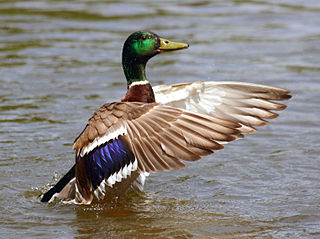 W
WThe speculum is a patch, often distinctly coloured, on the secondary wing feathers, or remiges, of some birds.
 W
WThe supercilium is a plumage feature found on the heads of some bird species. It is a stripe which runs from the base of the bird's beak above its eye, finishing somewhere towards the rear of the bird's head. Also known as an "eyebrow", it is distinct from the eyestripe, which is a line that runs across the lores, and continues behind the eye. Where a stripe is present only above the lores, and does not continue behind the eye, it is called a supraloral stripe or simply supraloral. On most species which display a supercilium, it is paler than the adjacent feather tracts.
 W
WTarring and feathering is a form of public torture and punishment used to enforce unofficial justice or revenge. It was used in feudal Europe and its colonies in the early modern period, as well as the early American frontier, mostly as a type of mob vengeance.